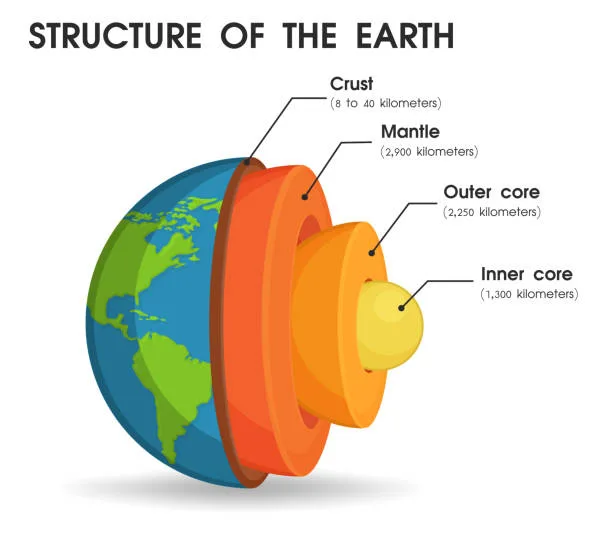Recent studies have significantly advanced our understanding of Earth’s inner core, revealing that it is less solid than previously believed and undergoing structural transformations. These findings have profound implications for our comprehension of Earth’s magnetic field, rotation, and overall internal dynamics.
Structural Changes in Earth’s Inner Core
A study published on February 10, 2025, in Nature Geoscience by scientists from the University of Southern California (USC) indicates that Earth’s inner core is less solid than previously thought. The research suggests that the inner core is undergoing structural transformations, challenging long-held assumptions about its composition and behavior.
Slowing Rotation and Deformation
Further research has revealed that Earth’s inner core is slowing down and may not be entirely solid. This discovery has prompted scientists to investigate the core’s composition and the reasons behind these changes.
Additionally, a study published on February 13, 2025, indicates that Earth’s inner core is deforming. This deformation could have future implications on the length of the day, highlighting the dynamic nature of our planet’s interior.
Implications for Earth’s Magnetic Field and Rotation
Understanding the inner core’s behavior is crucial, as it plays a significant role in generating Earth’s magnetic field, which protects life from harmful solar radiation and helps animals navigate. It also influences Earth’s rotation, affecting the length of our days by tiny but measurable amounts. These recent findings provide new insights into these fundamental planetary processes.
Conclusion
These groundbreaking studies challenge previous assumptions about Earth’s inner core, revealing a more complex and dynamic structure. Ongoing research is essential to fully understand the implications of these findings for Earth’s geology and the broader field of planetary science.
